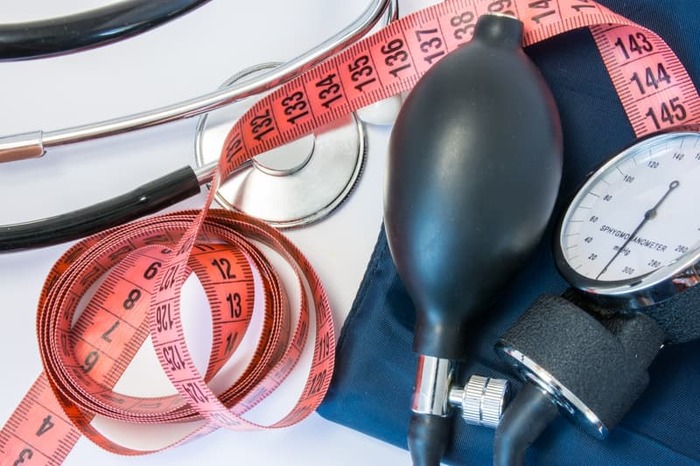- Calls to this hotline are currently being directed to Within Health or Eating Disorder Solutions
- Representatives are standing by 24/7 to help answer your questions
- All calls are confidential and HIPAA compliant
- There is no obligation or cost to call
- Eating Disorder Hope does not receive any commissions or fees dependent upon which provider you select
- Additional treatment providers are located on our directory or samhsa.gov
Eating Disorder Partial Hospitalization Programs
Eating disorders are mental health diagnoses involving a disturbance of eating-related behavior that significantly impairs one’s physical health or psychosocial functioning [1].
These disorders undoubtedly impact an individual’s physical and mental wellness and the degree to which this has occurred dictates the level of care an individual needs to receive in eating disorder treatment.
An individual that is medically compromised as a result of their eating disorder might require inpatient hospitalization, where they are admitted to a hospital-like facility for medical stabilization.
Individuals that continue to require medical supervision will enter Residential Treatment Centers, where they receive individual and group therapy, dietary support, psychiatry support, and 24-hour nursing care.
The next level-of-care are Partial Hospitalization Programs (PHPs). These programs are for those that need consistent groups and individual therapy sessions as well as continued dietary and psychiatric support yet do not need 24/7 nursing supervision and can, therefore, live at home while engaging in treatment.
Is Eating Disorder Partial Hospitalization Treatment Right for Me?
Individuals in Partial Hospitalization Programs are those that are not in urgent medical danger and, therefore, do not require 24/7 nursing or medical supervision. These individuals are beginning to practice maintaining recovery while living in their home environments yet attending treatment as if it is their job.
Individuals in PHP are often partially self-motivated. They likely continue to struggle with eating disorder thoughts or beliefs at least 3 hours per day.
If you are unsure whether this level of care is right for you, it is best to consult eating disorder treatment professionals to be evaluated.
What Does Partial Hospitalization Eating Disorder Treatment Entail?
Partial Hospitalization Programs involve much of the same services as treatments at higher levels of care. The biggest difference is the living arrangement of the individual and the amount of time in programming that the individual attends.
Individuals in PHP receive individual therapy, group therapy, psychiatry support, and dietary support just as they would in an inpatient or residential care. The only difference is the amount of each service the individual receives. In the above-mentioned treatments, individuals are receiving 24-hour care and programming from approximately 7 AM to 7 PM. In PHP, individuals begin a bit later and end a bit earlier, with hours often occurring between 8/9 AM and 4 or 5 PM. Individuals will likely have fewer individual, group, and dietary sessions each week so that they can begin to engage in their daily lives and maintain recovery while building autonomy in the “real world.”
The other impactful change between residential eating disorder treatment and PHP involves the individual’s living situation. Those in PHP, most often, are living in their own homes. This allows the individual to begin facing the daily triggers that exist in their lives such as relationships, employment, or environments while still having considerable support from a treatment team to be reminded to engage in recovery and practice effective skills.
Individuals in PHP also do not require 24-hour medical care but are still asked to meet with a medical professional at a minimum on a weekly basis to take vitals and labs.
What is Partial Hospitalization Treatment Like?
A big factor in what eating disorder PHP will look like these days involves whether the program is virtual or in-person.
Since the COVID-19 pandemic, more PHPs have transitioned to being completely virtual, with individuals doing group therapy, individual therapy, group meals, etc all online.
Regardless of a virtual or an in-person setting, the focus of PHP is to continue building off of the clinical insight and nutritional progress made in prior levels of care while adding in factors of daily life such as an individual’s home environment, job, family responsibilities, social life, and societal influences.
Partial Hospitalization Programs allow the individual to slowly re-enter everyday life while still having considerable support of at least 5 to 6 hours of treatment daily.
Individuals in PHP will likely continue having supported meals with their treatment team as well, however, these might include their support system or change a bit based on their unique life.
It is often not recommended that an individual return to work when attending PHP as there is often not enough time for a job and programming and it can be too much for an individual to take on at once. It is important to consider this as you speak with your treatment team about the amount of time your treatment will require, as individuals are recommended to engage in each level of care for approximately 30-45 days, minimum.
Choosing the Right PHP for Eating Disorders
It is hard to discuss what the “right” Partial Hospitalization Program is, as each individual has varying treatment needs. However, some key aspects to look for include:
- Team Approach: Research has long indicated that a multidisciplinary team is the most effective way to treat eating disorders. This means, at minimum, your treatment team should consist of a therapist, registered dietitian, psychiatrist, and primary care doctor.
- Theoretical Approach: The treatment approaches supported most by research are Cognitive Behavioral Therapies, Exposure & Response Prevention Therapy, and Family-Based Treatment. Be sure to ask a potential treatment program what approach they use and why.
Partial Hospitalization Treatment Costs
How much PHP will cost depends on the program as well as one’s insurance coverage? These factors can vary, therefore, it is important to communicate your needs to your insurance via a referral from a professional. From there, they will inform you of the programs they cover and support you in communicating with these programs to receive the help and support that you need.
You can also reach out to treatment centers as their case management teams can support you in navigating how to fund your treatment.
Resources
[1] American Psychiatric Association. (2013). Diagnostic and statistical manual of mental disorders (5th ed.).
Author: Margot Rittenhouse, MS, LPC, NCC
Page Last Reviewed and Approved By: Jacquelyn Ekern, MS, LPC 12.21.21



